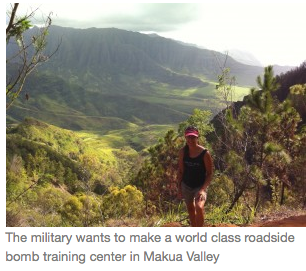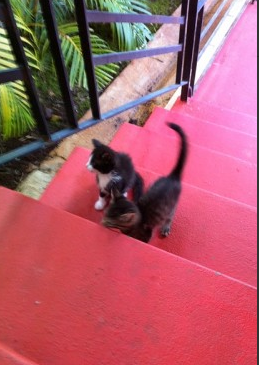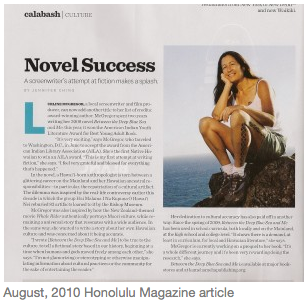These are selected parts of the essay I submitted as my application to become a trustee of the Bishop Estate. It was evidently not what the search committee was looking for, nevertheless it sums up my thoughts about the qualities that I believe are necessary to move Hawaiʻi into the future, not just as a Bishop Estate trustee but as a leader of our State:
Bishop Estate Trustee Cover Letter and Vision Statement
“There was once enough for everyone. That was before Captain Cook “discovered” our Hawaiian islands on his way to find a northwest passage, before the missionaries came to save our heathen ancestors and before the American businessmen called in the U.S. Navy to protect their land investments. For centuries before western contact, the Hawaiian people flourished. There was no disease, no hunger, no homelessness, no economic recession. That was then. Today, we who call Hawaiʻi home are mostly mainstream Americans, often holding two or more jobs just to survive, and are dependent on the outside world for everything, even bottled water.”
This was the opening paragraph of “Economic Recovery – Hawaiian Style”, an essay I wrote last August 2009 for a national competition entitled “Native Insights on Economic Recession”, sponsored by the Alaska Federation of Natives. This essay was selected as the winner of the Native Hawaiian category and was published in several national journals and newspapers, including the Honolulu Star Bulletin, in addition to winning a cash prize. It was most recently the single piece chosen among the winning essays for publication this past March in Yes! Magazine, a national journal that supports active engagement in building a just and sustainable world.
Writing this essay last summer was an opportunity to contemplate the nature of economic problems, from micro to macro, Hawaiʻi to the global marketplace and the many variables that control the delicate balance between growth and recession. I didn’t have any startling revelations, just the conclusion that we already have everything we need, not only to maintain a thriving economy but also to live healthy, fulfilled lives. This is a belief I have been living, writing about and encouraging for many years, including in my novel, Between the Deep Blue Sea and Me:
“Looking directly back into Moana’s eyes, Uncle Buddy responded. “Your family has always been very connected to the ocean. The cultural practices of your ancestors assured that food would always be plentiful, that the sea, in its bounty, would provide for everyone. This was our peoples’ way of life for centuries. Everyone took individual responsibility for their kuleana. Today, outsiders with different values control our islands… [They] will simply leave when there is nothing left to take. Many of the old ways that sustained us have already been lost, traded in for fast food and television. Moana, your ancestors gave you the knowledge of how to take care of the ‘āina, the kai, but it is up to you and your generation to decide how you will use it and what will become of Hawaiʻi.” (pp. 95-96)
In thinking about leadership and the future of our Islands, there is much to consider that goes beyond the narrow scope of how to grow the economy. The practice among Hawaiʻi leaders, including those in both government and industry, has been to rely heavily on outside and unsustainable solutions to fix our problems. This includes waiting for lower worldwide oil prices that will in turn increase tourism, the single industry that continues to determine the success or failure of our overall economy; favoring construction jobs as a quick fix for unemployment, regardless of environmental or future economic impacts; and reducing public services while imposing higher taxes on a community that is already stretched to its limits.
The outcome of such leadership is evident – foreclosures and bankruptcies that continue to rise in spite of renewed economic growth, public school furloughs that lasted a full school year, and increasing homelessness. And Native Hawaiians bear the worst of the socioeconomic impacts, as we have for well over the past one hundred forty years.
The specific mandate of the Bishop Estate trustees, as clearly articulated in Section Thirteen of Princess Pauahi’s Will and Codicils, is to maintain the Kamehameha Schools, manage her estate, and to the extent possible, educate and support Native Hawaiians in indigent circumstances. The issues of survival and well being of the Hawaiian people have not gone away since Pauahi wrote this one hundred twenty seven years ago, they have only evolved with the times.
I believe that strong leadership is at the heart of change, and change we, as a community, must if our future is to include a stable economy, a clean environment and a healthy population. Literacy, technological skills and sustainability are of utmost importance in achieving these goals and vision, and strategies must proceed at all levels and on all fronts. As long as all policies are made in the context of what is best for Kamehameha Schools students, the Native Hawaiian community and our beloved ‘āina, such decisions, will, in turn, benefit the entire Hawaiʻi community, now and in the future.
Each trustee brings his – and her – particular perspective, skills and life experience to the board, and the more diverse the individuals, the greater the synergy. Vision, courage and a deep respect for Hawaiian values must be at the core of each trustee’s principles, and from there will be an assurance of integrity and fairness in all decisions.
Motivated by a desire to pursue creative projects, I left my last full time job six years ago. Since then I have most notably produced several short films, taught, managed a business and written. My creative projects have allowed me to travel to present my work and participate in forums with other indigenous filmmakers and writers. [This past June I received] the American Indian Library Association award for ʻBest Young Adult’ fiction of 2010 for Between the Deep Blue Sea and Me. This is the first time Hawaiian literature has been acknowledged by this long-standing and influential organization and I am honored to help create opportunities for future Native Hawaiian literary writers to have their work recognized and embraced by a larger audience, as I have always believed strongly in the importance of telling our own stories.
For the past eighteen years I have also paddled on outrigger canoe crews, competing successfully in regattas, Molokaʻi channel crossings and international world sprint races. Paddling has, besides keeping me healthy and in touch with the community, been an important link to both my culture and my seafaring ancestors. I especially value the ongoing lessons of haʻahaʻa and laulima, both of which are integral to the teamwork of making the canoe move forward swiftly and smoothly.
There is much work to be done to fulfill Pauahi’s vision. The Kamehameha Schools will always be at the heart of her directives, yet in the times in which we are living, in which so much has already been lost, the objectives must be broad if they are to accomplish the survival and well being of the people. I believe it is possible for the leadership of the Bishop Estate to move the entire Hawaiʻi community in this direction.
Submitted by Lurline Wailana McGregor
May 26, 2010
 My hiking partners and I hiked up Kealia Trail, which begins in back of Dillingham Airfield in Mokuleia, ascends the mountain face via a number of switchbacks, then continues over to Makua ridge, ending in this overlook of Makua Valley.
My hiking partners and I hiked up Kealia Trail, which begins in back of Dillingham Airfield in Mokuleia, ascends the mountain face via a number of switchbacks, then continues over to Makua ridge, ending in this overlook of Makua Valley.


